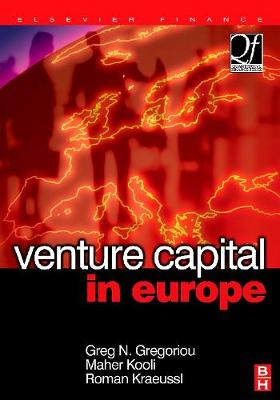Quantitative Finance
4 total works
With about $450 billion in assets, funds of hedge funds are the most recent darling of investors. While hedge funds carry high risk for the promise of high returns they are designed for the very rich and for large institutional investors such as pension funds. A Fund of Hedge Funds (FOF) spreads investments among a number of hedge funds to reduce risk and provide diversification, while maintaining the potential for higher than average returns. Odds are that some pension fund of yours is invested heavily in these products, and more recently these FOFs have been opened to more and more individual investors in offshore jurisdictions with lower minimum entry levels. Since this is a new and extremely fast-moving financial phenomenon, academic research has just begun in earnest, and this is the first book to present rigorous academic research by some of the leading lights in academic finance, carefully analyzing the broad array of issues involved in FOFs.
After the cooling off of IPOs since the dot com bubble, Google has rekindled the fire for IPOs. This IPO reader contains new articles exclusive to this reader by leading academics from around the world dealing with quantitative and qualitative analyses of this increasingly popular and important area of finance. Articles address new methods of IPO performance, international IPOs, IPO evaluation, IPO underwriting, evaluation and bookbuilding. Although numerous articles are technical in nature, with econometric and statistical models, particular attention has been directed towards the understanding and the applicability of the results as well as theoretical development in this area. This reader will assist researchers, academics, and graduate students to further understand the latest research on IPOs.
International Mergers and Acquisitions Activity Since 1990
by Greg N Gregoriou and Luc Renneboog
Published 11 May 2007
It is now a well-know fact that mergers and acquisitions activity comes in waves. The most recent wave, the 5th takeover wave of the 1990s, was characterized by an unprecedented number of corporate restructurings in terms of mergers and acquisitions (M&As), public-to-private transactions, spin-offs and divestitures, and leveraged recapitalizations. Following the collapse of the stock market in March 2000, M&A activity slumped dramatically, but this pause ended in the second half of 2004 when takeover deals occurred again quite frequently. Indeed, some observers wonder whether the 6th takeover wave has started. The takeover wave in the 1990s was particularly remarkable in terms of size and geographical dispersion. For the first time, Continental European firms were as eager to participate as their US and UK counterparts, and M&A activity in Europe hit levels similar to those experienced in the US. Due to its financial impact and the unprecedented activity in Continental Europe, the 5th takeover wave of the 1990s and recent takeover activity (in biotech, utilities, pharmaceuticals) have triggered a great deal of interesting academic research. This volume brings together a selection of insightful papers. An impressive group of international authors address the following themes: takeover regulation; the cyclical pattern of the M&A markets and probable causes and effects; methods to determine the performance of success of M&A actions; cross border deals; means of payment and its effects; studies of hostile bids; high leverage takeovers and delistings.
Venture Capital in Europe
by Greg N Gregoriou, Maher Kooli, and Roman Kraeussl
Published 19 October 2006
Until recently, only the United States had an active venture capital market. This is changing rapidly, as many other countries have experienced rapid growth in venture capital financing over the past five years. This book contains new scientific articles showcasing the latest research on venture capital in Europe. Venture capital investment remains a hot topic with portfolio managers, individual investors, academics worldwide. This book examines in detail all the major issues regarding venture capital investment: contracting, financing, regulation, valuation, etc. and identifies new trends in the venture capital arena. Features a foreword by Josh Lerner.



